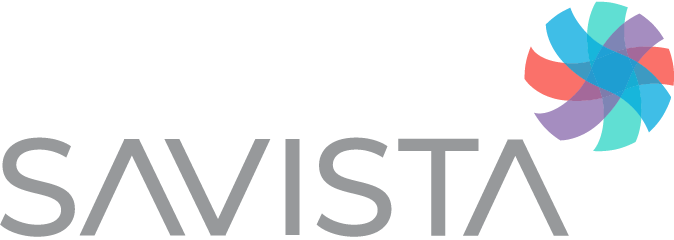Up to 1% of net patient revenue is lost due to deficient charge capture processes. According to the Healthcare Financial Management Association (HFMA) April 29, 2022, the charge description master, or CDM, is a major source of revenue leakage for healthcare providers. Understanding the connection between financial stability and CDM viability appears to be recognized – in January 2022, Information Week reported that 78% of healthcare executives identify charge capture as essential, but, only 40% discuss it at least once a month.
Misjudged by some as insignificant, a hospital’s CDM is the heart of the revenue cycle, recording services that convert into actionable data points, creating bills that result in reimbursement and facilitate the continuation of services that are recorded, and so the cycle continues. Clearly, optimizing the CDM benefits your organization and presents an opportunity to drive additional revenue for your hospital.
The CDM
The charge description master records a patient’s care, documents quality, facilitates federal and state reporting, determines resource allocation, supports budget decisions, and influences capital investment strategies. The American Academy of Professional Coders (AAPC) states that an effective CDM is compliant, correct, and complete. Their recommendation is the foundation of a CDM review and the ongoing goal for maintenance. The more you fine tune CDM functionality, the healthier your bottom line becomes. How else can you make sure your charge description master benefits your organization?
CDM best management practices
Amidst dealing with diminishing cash and competing priorities, a comprehensive charge description master assessment is frequently relegated to a less significant status. Providers defend this position by declaring there have been no changes in services over the last few years, internal resources review the CDM on an annual basis, software is used to address this need, or charges do not matter in a predominantly DRG environment. These positions are plausible, but given the pivotal role the CDM holds in maintaining financial viability of healthcare providers, it is wise to conduct an assessment. Best practice recommends a complete CDM assessment initially with quarterly update reviews to maintain compliance, correctness and completeness.
What does the CDM assessment entail?
A CDM assessment includes:
Interviews with all departments to assess their services, how the items are charged and whether the coding is correct. Probing questions uncover additional services that are missing from the charge description master, if services require charge modifications or whether the appropriate code is available.
Documentation of all processes to assist with education, facilitate changes, and support audits.
Identification of areas of incomplete charging, which occurs frequently, especially in operating room. Certain nuances go unnoticed – device assisted surgeries, procedure changes and new services. These missed items are not in the CDM, so staff choose the CDM item closest in description or charge – which leads to poor documentation and risk of shortchanging your reimbursement. It also creates compliance risk.
A similar situation occurs with deficient maintenance of medical devices and implants resulting in incorrect HCPCS coding in the CDM. Lost revenue, warranty/ recall problems and compliance issues result from inability to charge for every service documented in the patient’s medical record
A third-party review provides a unique perspective; the organization benefits from their in-depth experience with your specific EMR and PAS, including how items map between the two systems, bundling regimens, routine supply charging policies, and OR charging nuances.
The vendor understands the geographic and payor specifics enabling them to recommend optimization strategies to strengthen a provider’s price defensibility, enhance market share, and increase revenue.
Conducted in-house or by a third party, the CDM assessment is an investment that results in a benchmark chargemaster that ensures and protects revenue and mitigates compliance risk.
What value does an optimized chargemaster provide?
Reduces compliance risk, decreases cost-to-collect, improves billing timeliness and reduces denials.
All charges reflect accurate revenue codes, CPT/HCPCS codes, and modifiers.
Catches overlooked important ongoing changes outside of quarterly updates based on CMS updates.
Identifies deleted or non-billable CPT codes, charges coded with CPT rather than the appropriate HCPCS code, HCPCS codes that are unlisted or missing for recording separately paid drugs, and missing or inaccurate modifiers.
Ensures automatic processes that improve charge collection are in place and functioning properly.
Eliminates improper bundling of items that create denials and negatively impact revenue.
Addresses the daily charging of routine supplies that frequently come under payer scrutiny.
Mitigates faulty processes, e.g., erroneous conversion of pharmacy dispensing units to billing units or obsolete/ improper OR time unit assignment.
Uncovers scenarios where the same service, delivered in a different setting, has a different fee, a common practice that can trigger audits and create patient confusion.
As healthcare transitions from fee-for-service to value-based reimbursement, the ability to document the patient’s history and full range of care is critical for assessing quality and ensuring revenue integrity. The CDM is the powerhouse supporting cost-recovery, reimbursement, price defensibility, and competitive market fees. It is not a set it and forget it exercise. Maintaining the CDM requires the consistent, ongoing effort of a dedicated and expert team. This process is essential for organizations to thrive in this everchanging healthcare environment.
To learn more about how your organization can shore up its bottom line with Savista’s trusted chargemaster services, contact our CDM experts today.
CDM Services
Ensure a Healthy Bottom Line
Proper CDM setup and maintenance is especially important as you face declining reimbursements and rising scrutiny of charging accuracy, pricing transparency, and justification. However, a best practice CDM requires time and resources that most providers simply do not have. Let our seasoned experts help you optimize and maintain your CDM to improve billing practices, mitigate compliance and regulatory risks and improve patient satisfaction.


